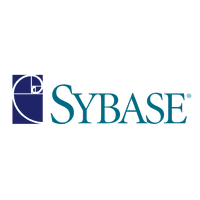The tap-sybase extractor pulls data from Sybase that can then be sent to a destination using a loader.
Getting Started
Prerequisites
If you haven't already, follow the initial steps of the Getting Started guide:
Installation and configuration
-
Add the tap-sybase extractor to your
project using
:meltano add -
Configure the tap-sybase
settings using
:meltano config -
Test that extractor settings are valid using
:meltano config
meltano add tap-sybasemeltano config tap-sybase set --interactivemeltano config tap-sybase testNext steps
Follow the remaining steps of the Getting Started guide:
If you run into any issues, learn how to get help.
Capabilities
The current capabilities for
tap-sybase
may have been automatically set when originally added to the Hub. Please review the
capabilities when using this extractor. If you find they are out of date, please
consider updating them by making a pull request to the YAML file that defines the
capabilities for this extractor.
This plugin has the following capabilities:
- about
- catalog
- discover
- schema-flattening
- state
- stream-maps
You can
override these capabilities or specify additional ones
in your meltano.yml by adding the capabilities key.
Settings
The
tap-sybase settings that are known to Meltano are documented below. To quickly
find the setting you're looking for, click on any setting name from the list:
charactersetcursor_array_sizedatabasefilter_dbsflattening_enabledflattening_max_depthhostpasswordportstream_map_configstream_mapstds_versionuse_date_datatypeuse_singer_decimaluser
You can also list these settings using
with the meltano configlist
subcommand:
meltano config tap-sybase list
You can
override these settings or specify additional ones
in your meltano.yml by adding the settings key.
Please consider adding any settings you have defined locally to this definition on MeltanoHub by making a pull request to the YAML file that defines the settings for this plugin.
Characterset (characterset)
-
Environment variable:
TAP_SYBASE_CHARACTERSET -
Default Value:
utf8
The characterset for the database / source system. The default is utf8, however older databases might use a charactersets like cp1252 for the encoding. If you have errors with a UnicodeDecodeError: 'utf-8' codec can't decode byte .... Then a solution is examine the characterset of the source database / system and make an appropriate substitution for utf8 like cp1252.
Configure this setting directly using the following Meltano command:
meltano config tap-sybase set characterset [value]Cursor Array Size (cursor_array_size)
-
Environment variable:
TAP_SYBASE_CURSOR_ARRAY_SIZE -
Default Value:
1
To make use of fetchmany(x) instead of fetchone(), use cursor_array_size with an integer value indicating the number of rows to pull. This can help in some architectures by pulling more rows into memory. The default if omitted is 1, the tap will still use fetchmany, but with an argument of 1, under the assumption that fetchmany(1)==fetchone().
Configure this setting directly using the following Meltano command:
meltano config tap-sybase set cursor_array_size [value]Database (database)
-
Environment variable:
TAP_SYBASE_DATABASE
The name of the Sybase database e.g. example_db.
Configure this setting directly using the following Meltano command:
meltano config tap-sybase set database [value]Filter Databases (filter_dbs)
-
Environment variable:
TAP_SYBASE_FILTER_DBS
To filter the discovery to a particular schema within a database. This is useful if you have a large number of schemas and wish to speed up the discovery.
Configure this setting directly using the following Meltano command:
meltano config tap-sybase set filter_dbs [value]Flattening Enabled (flattening_enabled)
-
Environment variable:
TAP_SYBASE_FLATTENING_ENABLED
'True' to enable schema flattening and automatically expand nested properties.
Configure this setting directly using the following Meltano command:
meltano config tap-sybase set flattening_enabled [value]Flattening Max Depth (flattening_max_depth)
-
Environment variable:
TAP_SYBASE_FLATTENING_MAX_DEPTH
The max depth to flatten schemas.
Configure this setting directly using the following Meltano command:
meltano config tap-sybase set flattening_max_depth [value]Host (host)
-
Environment variable:
TAP_SYBASE_HOST
The host name or IP Address running the Sybase Database
Configure this setting directly using the following Meltano command:
meltano config tap-sybase set host [value]Password (password)
-
Environment variable:
TAP_SYBASE_PASSWORD
The password for the connecting user to the Sybase database
Configure this setting directly using the following Meltano command:
meltano config tap-sybase set password [value]Port (port)
-
Environment variable:
TAP_SYBASE_PORT -
Default Value:
2638
The port that the database is running on, defaults to port 2638
Configure this setting directly using the following Meltano command:
meltano config tap-sybase set port [value]Stream Map Config (stream_map_config)
-
Environment variable:
TAP_SYBASE_STREAM_MAP_CONFIG
User-defined config values to be used within map expressions.
Configure this setting directly using the following Meltano command:
meltano config tap-sybase set stream_map_config [value]Stream Maps (stream_maps)
-
Environment variable:
TAP_SYBASE_STREAM_MAPS
Config object for stream maps capability. For more information check out Stream Maps.
Configure this setting directly using the following Meltano command:
meltano config tap-sybase set stream_maps [value]Tds Version (tds_version)
-
Environment variable:
TAP_SYBASE_TDS_VERSION
Set the version of TDS to use when communicating with Sybase Server (the default is None). This is used by pymssql with connecting and fetching data from Sybase databases. See the pymssql documentation and FreeTDS documentation for more details.
Configure this setting directly using the following Meltano command:
meltano config tap-sybase set tds_version [value]Use Date Datatype (use_date_datatype)
-
Environment variable:
TAP_SYBASE_USE_DATE_DATATYPE -
Default Value:
false
To emit a date as a date without a time component or time without an UTC offset. This is helpful to avoid time conversions or to just work with a date datetype in the target database. If this boolean config item is not set, the default behaviour is false i.e. emit date datatypes as a datetime. It is recommended to set this on if you have time datetypes and are having issues uploading into into a target database.
Configure this setting directly using the following Meltano command:
meltano config tap-sybase set use_date_datatype [value]Use Singer Decimal (use_singer_decimal)
-
Environment variable:
TAP_SYBASE_USE_SINGER_DECIMAL -
Default Value:
false
To emit all numeric values as strings and treat floats as string data types for the target, set use_singer_decimal to true. The resulting SCHEMA message will contain an attribute in additionalProperties containing the scale and precision of the discovered property. We recommend setting this value to true for accurate ingestion of floats and decimal data.
Configure this setting directly using the following Meltano command:
meltano config tap-sybase set use_singer_decimal [value]User (user)
-
Environment variable:
TAP_SYBASE_USER
The user name used to connect to the Sybase database
Configure this setting directly using the following Meltano command:
meltano config tap-sybase set user [value]Something missing?
This page is generated from a YAML file that you can contribute changes to.
Edit it on GitHub!Looking for help?
#plugins-general
-yellow)










-49-c0c0c4)
-1-c0c0c4)


